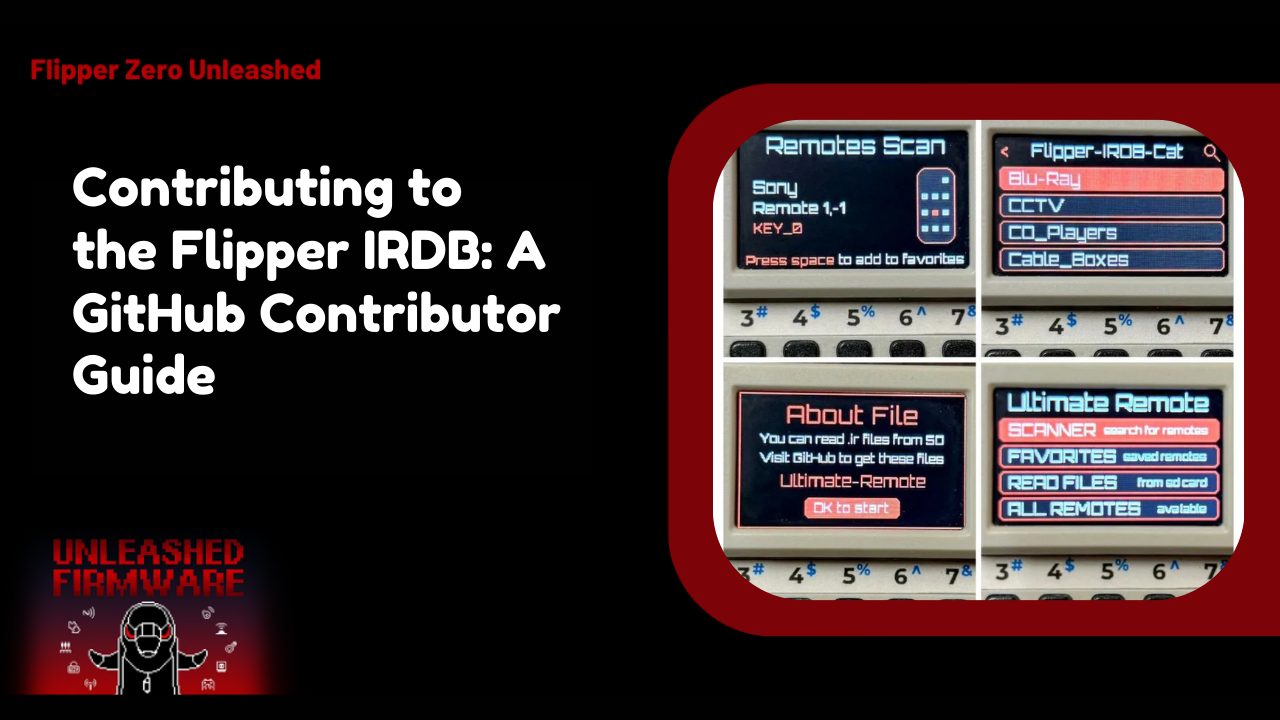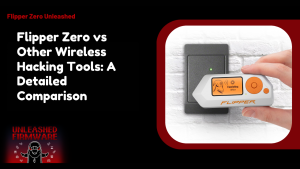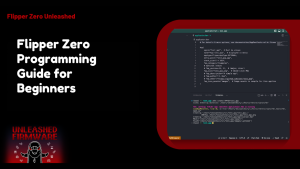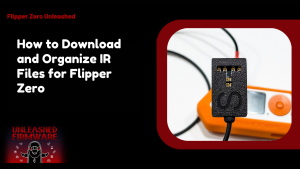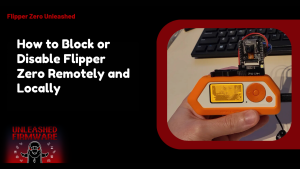Table of Contents
ToggleIntroduction
Contributing to Flipper IRDB is an exciting way to be part of the Flipper Zero community. Whether you’re passionate about technology or just love tinkering with gadgets, adding new IR codes helps everyone expand the Flipper Zero IR database. It’s fun, collaborative, and you get to see your work used by thousands of users worldwide! Before jumping in, it’s helpful to understand what the IRDB flipper project is all about.
What You Need to Know Before Contributing
Before you start contributing, it’s essential to familiarize yourself with how the Flipper Zero IRDB works. Every code added must be precise, tested, and follow the community guidelines. Mistakes can create conflicts or make code unusable, so attention to detail is key. Additionally, knowing which devices are already covered in the Flipper IRDB will save you time.
Understanding the IRDB Structure
The Flipper Zero IR database is structured to keep codes easy to access and manage. It’s divided by device type, brand, and function, so adding a new code means slotting it into the correct category. Understanding this hierarchy will make your contributions smoother and reduce errors. Each IR code entry contains essential information, including the device name, code type, protocol, and any notes regarding functionality. Following this format ensures consistency, making the IRDB flipper reliable and efficient for all users.
Required Tools and Accounts
To contribute, you’ll need a GitHub account because the Flipper Zero IRDB is hosted there. Familiarity with basic Git commands, such as clone, commit, and push, is very helpful but not mandatory, as user-friendly guides are available. Additionally, having your Flipper Zero handy makes testing much easier. You’ll need to verify that your codes work as expected before submitting them. With your device ready and accounts set up, you’ll be fully equipped to start contributing to the flipper IRDB!
Setting Up Your GitHub Environment
Setting up your GitHub environment is the first step toward contributing to the Flipper Zero IRDB. A well-prepared setup ensures smooth workflow and minimizes errors while adding IR codes. Whether you prefer using GitHub Desktop or command-line Git, having everything ready is crucial for efficient contribution. Having the proper setup also allows you to test, review, and update code without affecting the central repository. This ensures the Flipper Zero IR database stays stable while you add your valuable contributions.
Installing Git and GitHub Desktop
Installing Git is essential if you want to manage your contributions effectively. Git tracks all your changes, helping you organize and document updates for the IRDB flipper. GitHub Desktop offers a more visual and beginner-friendly approach, making it easier to commit, push, and sync changes. Once installed, link your GitHub account to GitHub Desktop or configure Git via the terminal. This step ensures that your contributions are appropriately tracked and attributed to you in the Flipper Zero IRDB repository.
Forking and Cloning the Repository
Forking the repository creates a personal copy of the Flipper Zero IR database, allowing you to experiment without affecting the main project. Cloning downloads this fork to your local machine, making it easy to test and add new IR codes efficiently. This process ensures that your changes remain organized and separate from the central IRDB Flipper repository until they’re reviewed and approved. Forking and cloning are foundational steps for safe and structured contributions.
Learning the Contribution Workflow
The contribution workflow is how changes are moved from your local copy to the main Flipper Zero IRDB. Typically, it involves creating a branch, making your changes, committing them with clear messages, and then submitting a pull request. Following this workflow keeps your contributions neat and makes it easier for maintainers to review. It also ensures that your flipper IRDB additions integrate seamlessly with existing codes.
Branching and Commit Guidelines
Branching enables you to work on new IR codes without impacting other tasks. Create a descriptive branch name that reflects the changes, such as adding codes for a specific device brand. Commit guidelines matter too. Use clear, concise messages describing what you’ve added or fixed. This practice helps maintainers understand your work and keeps the Flipper Zero IR database organized.
Pull Requests Explained
Pull requests (PRs) are how you propose your contributions to the central IRDB flipper repository. After submitting a PR, maintainers review your changes, suggest improvements if needed, and merge your additions once everything is verified. A well-prepared PR increases the chance of quick approval. Make sure your IR codes are tested, your branch is clean, and your commit messages are descriptive. This ensures your contributions enrich the Flipper Zero IR database without issues.
Adding New IR Codes
Adding new IR codes to the Flipper Zero IRDB is one of the most exciting parts of contributing. Your additions help expand the Flipper Zero IR database and make the tool more versatile for all users. Before adding, make sure you’ve captured the signals accurately and tested them on a local device. Organizing your contributions properly ensures maintainers can review and merge them quickly. Each new code you add strengthens the IRDB flipper community and keeps the repository growing with quality content.
Capturing Signals Accurately
Accurate signal capture is key when adding IR codes. Use a reliable remote or IR device and ensure that the Flipper Zero IRDB records every command correctly. Minor mistakes in capturing can make the code unreliable or completely non-functional. Test each signal multiple times to confirm consistency. Capturing precisely ensures that your contributions will work seamlessly in the Flipper Zero IR database for all users.
Naming and Organizing Codes Properly
Proper naming and organization of IR codes help maintain clarity in the IRDB flipper. Use descriptive names that reflect the device brand, model, and function. Avoid vague names like “remote1” or “deviceA” as they confuse users and maintainers. Group codes logically in folders or categories, making it easy to locate them in the Flipper Zero IR database. A tidy library makes contributions professional and user-friendly.
Reviewing and Testing Contributions
Before submitting your PR, review every IR code and test it thoroughly. Verify that each command works on actual devices and that the Flipper Zero IRDB reflects the correct signal timing. Testing prevents errors from reaching the central repository. A well-reviewed contribution ensures the Flipper Zero IR database remains reliable and trustworthy for all users.
Validating IR Codes
Validation is about confirming your code matches the expected device response. Cross-check with other community contributions in the Flipper Zero IR database to ensure accuracy. Use validation tools or community feedback to confirm your IR codes are precise. Accurate validation strengthens the integrity of the IRDB flipper library and boosts user confidence.
Using Test Devices and Emulators
Whenever possible, test new IR codes on multiple devices or emulators to ensure compatibility. This approach ensures compatibility and catches device-specific quirks. Testing in different environments ensures that your contribution works beyond a single setup. This careful approach helps maintain the quality of the Flipper Zero IR database and makes the Flipper Zero IRDB more versatile for the community.
Tips for Successful Collaboration
Collaboration is the heart of contributing to the Flipper Zero IRDB. Clear communication with maintainers and other contributors ensures that your additions fit smoothly into the Flipper Zero IR database. Always check the contribution guidelines before submitting to avoid delays or rejections. Sharing your experience and helping others troubleshoot issues strengthens the community. Engaging actively ensures that your contributions to the IRDB flipper are recognized and valued.
Best Practices for GitHub Contributions
Following best practices ensures that your contributions remain clean and professional. Use meaningful commit messages, keep changes focused, and regularly test your IR codes in the Flipper Zero IR database before submitting. Avoid large, messy pull requests as they can be hard to review. Maintain a consistent workflow for branching and syncing your fork with the central repository. This approach helps keep the Flipper Zero IRDB organized and reliable for all users.
Engaging with the Community
The IRDB flipper thrives on community input. Participate in discussions, report bugs, and give feedback on other contributions. Sharing your testing results or suggesting improvements can make a huge difference. Engagement helps you learn faster, build a reputation, and ensures the Flipper Zero IR database continues growing with quality, tested IR codes.
Conclusion
Contributing to the Flipper Zero IRDB is a fun and rewarding way to support the Flipper community. By following proper workflows, capturing accurate IR codes, and engaging with fellow contributors, you help keep the Flipper Zero IR database reliable and growing. Whether you’re adding new codes, testing existing ones, or sharing your expertise, every contribution makes a difference. Staying organized, following best practices, and actively participating ensure that your work with the IRDB Flipper is recognized and valued.
FAQs
How do I start contributing to Flipper IRDB?
You start by setting up a GitHub account, forking the repository, and following the contribution workflow outlined in the guidelines.
Can anyone submit IR codes?
Yes! As long as your code is accurate and follows the repository’s naming and formatting rules, anyone can contribute.
How do I handle merge conflicts?
Pull the latest changes from the central repository, resolve conflicts locally, and test your code before resubmitting your PR.
What is the process for reviewing contributions?
Maintainers, check your pull request for accuracy, testing, and adherence to formatting guidelines before merging.
Can I update or fix existing codes?
Absolutely! You can improve, correct, or optimize IR codes while following the same contribution process.
How often should I sync my fork with the central repository?
Regular syncing, especially before starting new work or submitting PRs, prevents conflicts and ensures your fork is up-to-date with the Flipper Zero IR database.
Latest post:
